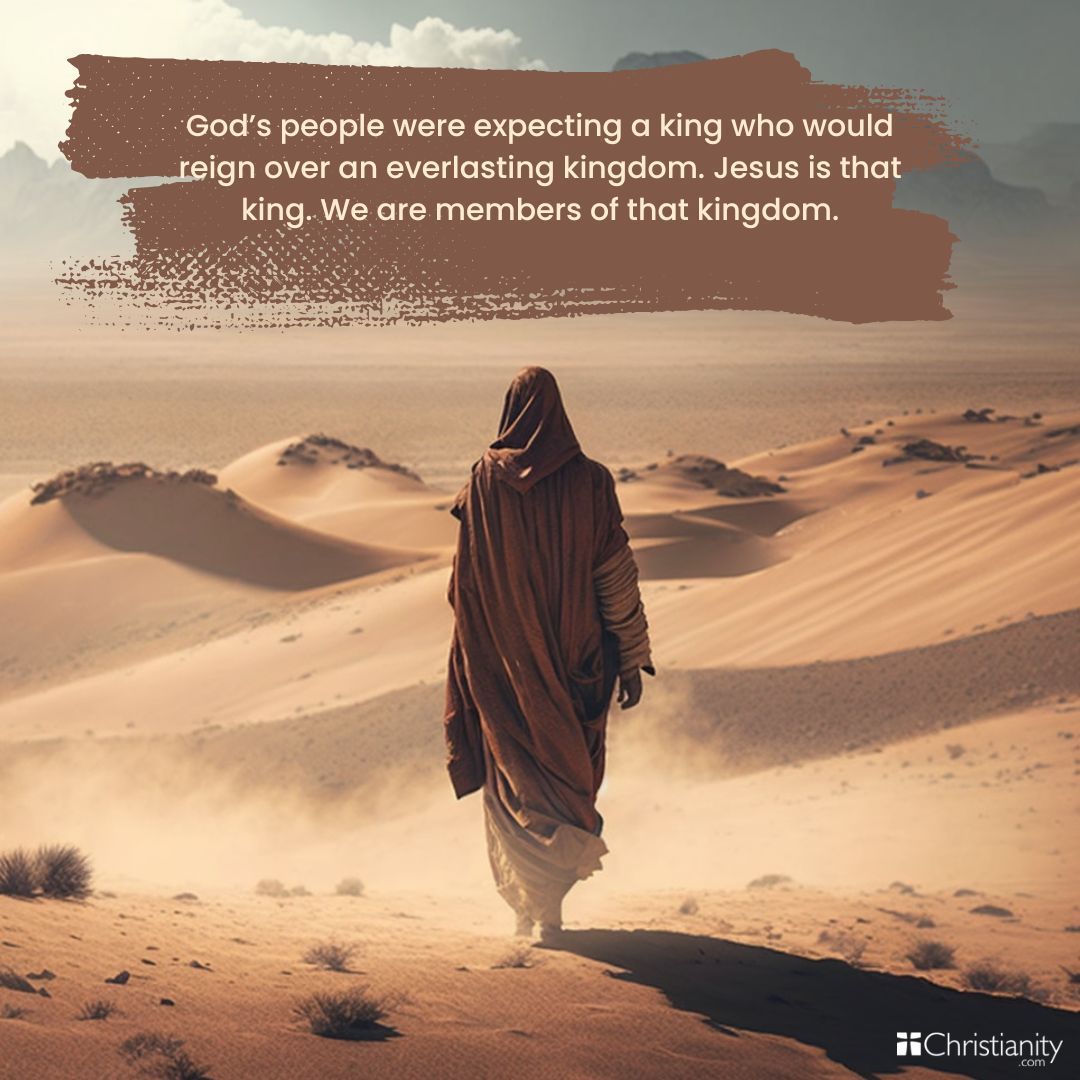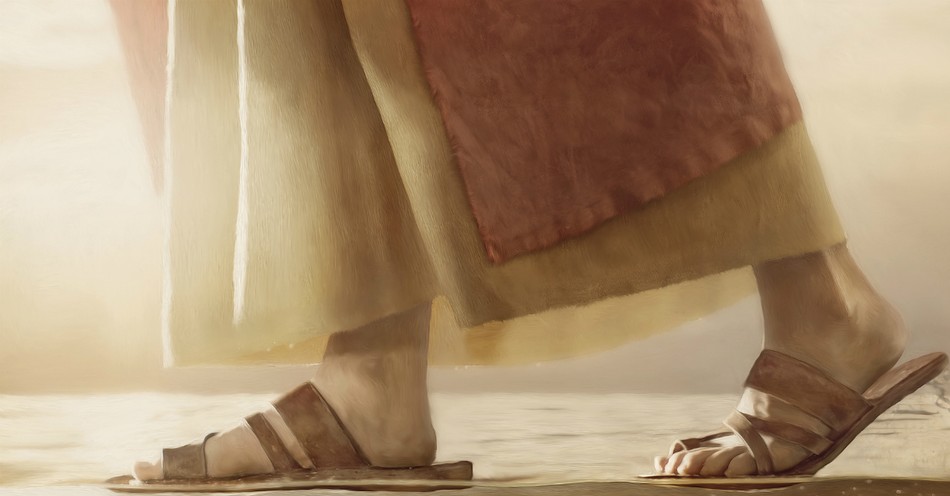Who Is Jesus?
Jesus is described in a number of different ways in the New Testament. The following are just some selected examples from the synoptic gospels (i.e., Matthew, Mark, and Luke):
Son of God or Son of the Most High
(Matt 8:29; 14:33; 16:16; 27:54; Mk 1:1; 3:11; 5:7; 15:39; Lk 1:32, 35; 3:38; 4:41; 8:28; cf. Matt 4:3, 6; 26:63; 27:40, 43; Lk 4:9; 22:70)
Son of Man
(Matt 8:20; 9:6; 10:23; 11:19; 12:8, 32, 40; 13:37, 41; 16:13, 27-28; 17:9, 12, 22; 19:28; 20:18, 28; 24:27, 30, 37, 39, 44; Mk 2:10, 28; 8:31, 38; 9:9, 12, 31; 10:33, 45; 14:21; Lk 5:24; 6:5, 22; 7:34; 9:22, 26, 44, 58; 11:30; 12:8, 10, 40; 17:22, 24, 26, 30; 18:8, 31; 19:10; 21:27, 36; 22:22, 48)
Son of David
(Matt 1:1; 9:27; 15:22; 20:30-31; 21:9, 15; 22:42; Mk 10:47-48; Lk 1:32; 3:31; 18:38-39)
Christ
(Matt 1:1, 16-17; 11:2; 16:16; Mk 8:29; Lk 2:11, 26; 3:15; 4:41; 9:20)
Lord
(Matt 8:2, 6, 8, 21, 25; Mk cf. Matt 7:22; Mk 1:3; 7:28; 11:3; Lk 5:8, 12)
What Are the 7 'I Am' Statements of Jesus?
Jesus also describes himself through the “I Am” statements in John’s gospel. Jesus identifies himself as:
1. The bread of life
2. The light of the world
3. The gate of the sheep
4. The good shepherd
5. The resurrection and the life
6. The way, the truth, and the life
7. The true vine
These “I Am” statements are rooted in the name God gives to Moses in Exodus 2:14. As such, Jesus says, “Truly, truly, I say to you, before Abraham was, I am” (Jn 8:58). In doing so, he identifies himself as God (cf. Jn 1:1).
For more on Jesus and the gospels, see “Knowing Jesus, A Walk Through the Gospels” available on Christianity.com PLUS or as an online course at Useful to God.
How Is Jesus Described in the Rest of the New Testament?
In addition to these and various other titles, Jesus is described as the one in whom “the whole fullness of deity dwells bodily” and “is the head of all rule and authority” (Col 2:9-10). He is the one “who was delivered up for our trespasses and raised for our justification” (Rom 4:25). Jesus also “became to us wisdom from God, righteousness and sanctification and redemption” (1 Cor 1:30). He is “faithful witness, the firstborn of the dead, and the ruler of kings on earth” (Rev 1:5).
Most, if not all, of these titles have roots in Old Testament expectation and imagery. As the one who is God’s “salvation…prepared in the presence of all peoples, a light for revelation to the Gentiles, and for glory to your people Israel” (Lk 2:30-32), Jesus is not only the fulfilment of specific Old Testament prophecies but of the hopes expressed throughout the Old Testament. Those expectations began in Genesis 1 and end in 2 Chronicles (2 Chronicles is the final book in the Jewish canon, whereas Malachi comes at the end of the canon in Christian Bibles).
Jesus and the Expectations of Genesis 1
In Genesis 1:1-2:3, we see God create the various aspects of creation. After creating light (1:4), separating dry land from the waters (1:10), bringing forth vegetation (1:12), distinguishing the day from the night (1:18), making the sea creatures and birds (1:21), and creating the beasts of the earth (1:25), God looks at what he had done and deems it “good.” This goodness likely refers to the world’s alignment with the design God had intended. The various elements of creation worked together in relative harmony.
Interestingly, after God creates humankind, we don’t see the repetition of “he saw that it was good” as we do with the creation of the other aspects of creation. Instead, God gives humans a purpose: “Be fruitful and multiply and fill the earth and subdue it, and have dominion over the fish of the sea and over the birds of the heavens and over every living thing that moves on the earth” (Gen 1:28). He then gives the humans and the other creatures “every plant yielding seed that is on the face of all the earth, and every tree with seed in its fruit” for their food (1:29-30) before looking over “everything that he had made” and determining that “it was very good” (1:31). Whereas the other aspects of creation are “good,” humanity’s goodness is contingent on human agency. They will either exercise dominion or not.
In chapter 2, we witness the placement of the man in the garden where he was to “work it and keep it” (2:15) and God’s creation of woman as a co-laborer (often translated helper) suitable to fill in the man’s gaps and help him to overcome his own limitations (for more on the idea of the “helper” listen to my discussion of ezer here). The garden was a specific, bounded location that the human couple was to care for and, as they began to multiply and fill the earth, expand the precincts of the garden until it filled the whole earth.
As we see in Genesis 3:1-7, humanity fails to exercise dominion by ignoring the command of God and seeking to determine a path independent of Him. The “shrewdest of the beasts the Lord God had made” (Gen 3:1) subverts God and disrupts the authority humans were to exercise over the beasts and other creatures. Having failed, the harmony of the original creation is thrown into turmoil and humanity, along with the rest of creation, must look forward to God’s salvation. The expansion of the garden that would allow God’s glory to be reflected over the face of the whole earth would have to wait.
Jesus and the Expectations of Daniel
Fast forward to the book of Daniel in which God’s people have been exiled and are living under Babylonian rule. In Daniel 7, Daniel receives a vision of four beasts. The vision corresponds to Nebuchadnezzar’s dream in Daniel 2 where Daniel tells Nebuchadnezzar the meaning of the statue he saw in his dream. It represents Nebuchadnezzar himself (2:37-38) and three other kingdoms (2:39-43). These kingdoms will be broken by a “stone…cut out by no human hand” that becomes “a great mountain and filled the whole earth” (2:34-35). The mountain that fills the whole earth is the kingdom of God that replaces all other kingdoms. God’s reign will be total.
The vision in Daniel 7 parallels Nebuchadnezzar’s dream. Instead of portraying four kingdoms (or three kingdoms and Nebuchadnezzar) as in chapter 2, Daniel 7 focuses on a vision with four beasts who are the kings of the four kingdoms. Instead of a stone and mountain, “one like a son of man” is given everlasting dominion (7:13-14) over the beasts who have had “their dominion…taken away” even though “their lives were prolonged for a season and a time” (7:12). Those who oppose the Lord or seek to oppress his people will ultimately be overcome by God’s kingdom and his king.
The notion of dominion is almost certainly tied to the original mandate given to humanity to exercise dominion over the God’s creation—including the beasts. As biblical scholar James Hamilton notes, “They [the visions of Daniel] pattern the activities of the wicked powers that have exercised beastly dominion ever since God’s viceregent [Adam] surrendered that dominion through rebellious sin against the Sovereign.” While the kings and their kingdoms seek to stamp out and pervert the worship of God, they will fail. Commenting on this pattern in Daniel, Hamilton notes,
“The book of Daniel portrays this pattern in Daniel’s own day, predicts that it will continue as history weaves its long tapestry…and promises that it will culminate in a final king of shocking power, desolating sacrilege and unholy success. That beast will die and his body be burned when the Ancient of Days takes the throne. Then God’s king will reign over God’s people in God’s place—all creation—and they will shine with the glory of God like stars in the heavens.”
God’s people were expecting a king who would reign over an everlasting kingdom. Jesus is that king. We are members of that kingdom.

So, who is Jesus? Jesus is the one who has come and is coming to establish the kingdom of God. He is the one to whom all authority on heaven and earth has been given (Matt 28:18). He is the second Adam through whom those “who receive the abundance of grace and the free gift of righteousness” will “reign in life” (Rom 5:17). He reestablishes the human dominion that was once lost. Jesus is the “one like a son of man” who overcomes the beast and will reign over and with his people for all eternity (2 Tim 2:11-12; Rev 20:6; 22:5).
Photo Credit: ©GettyImages/KristiLinton




